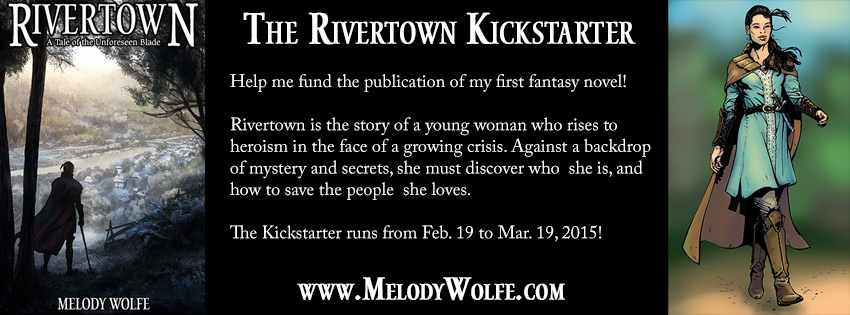(We're lucky to have guest blogger and author Ian T. Healy with us today to give us a quick lesson on how you translate the very visual medium of super-heroes and other "genre" characters into the written word. Take it away, Ian!)
Description is one of the fundamental aspects of good fiction writing. Writers wield it, like so many other tools, to create a scene and set the stage in the mind's eye of the reader. Sometimes descriptions can be somewhat vague, allowing the reader's own imagination to set up the details. In situations like that, five people might read the same description and come up with five wildly different images in their minds of what the author is describing. Rookie writers often go to extremes, either not using nearly enough description to even give a bare-bones outline of a scene, or else inundating the reader with an exhaustive level of detail right down to the color, material, closure-method, texture, scent, and number of pouches strapped to their hero's left leg (obviously in this case, the hero is a '90s Image character).
So where does a writer find that balance?
Well, first of all, you can't treat description like a laundry list. Let's say we're describing a character from a steampunk space setting - if anybody remembers the RPG Space: 1889, this is the kind of thing I'm talking about here. Suppose our character has the following important points in his description:
- Brass goggles (a steampunk genre requirement)
- Wealth (you have to be to ride on an orbital train)
- Period-appropriate dress (tweed coat, vest, cravat)
You could describe all of those things in a sentence, perhaps using the cliche of having the character examine his appearance in a mirror. Let's face it, characters in books spend a lot more time staring into the mirror than most of us probably do, because most of us are uglier than a Rigellian Snotlizard's cloaca in full rut. Hey, did you see what I did just there? None of you have ever seen a Rigellian Snotlizard, because I just made that up. But I'll bet every one of you formed a distinct mental image from that phrase, and now you're feeling a little ill. Back to our lesson, though. Suppose we wrote out the following:
Jonathan examined his reflection in the mirror of his stateroom, looking at the brass goggles on his head, the tweed coat over his vest and cravat, and thumbed the money clip stuffed nearly to bursting in his pocket.
Does that description give you a successful image of the character? Yes, it probably does. Is it interesting to read? No, not really. Why is that? Because it's boring to read about someone looking at himself. It's passive and just a little bit perverse, like we're staring in through the keyhole. There's nothing here to tell us about the character, nothing to hook us. And when it comes to writing successful fiction, failure to hook means failure to catch the attention of an agent, editor, and publisher. Let's look at the same descriptive points, now using an excerpt from a manuscrpt I'm coauthoring with a friend called The Oilman's Daughter:
The majestic Earth hung over Jonathan Orbital’s head as the cars of the Circumferential Rail chugged along the parallel steel tracks that vanished into the darkness of space. He adjusted his brass goggles with the smoked lenses that rested against his forehead, ready to be lowered at a moment’s notice when the sunlight became too much to bear.
Everyone on the train had similar eye protection, whether the gawky industrial models with a single oversized lens, the wire-rimmed pince-nez preferred by the Europeans, or the fashionable dual-lensed models with India rubber straps like Jonathan wore. He smiled at the blue planet above him and wished he was back on its surface, breathing the fresh sea air of his home in Houston instead of the canned air of the train with its metallic stink. Far ahead on the rails, the atomic-powered engine’s radiators looked like a moth’s feathery antennae, sprouting forth from the great steel reactor and boiler. They glowed a dull red even in the naked sunlight. The engine’s vent of excess steam left behind a wispy cloud of snowflakes that sparkled like diamonds.
A knock sounded against the teakwood door of Jonathan’s stateroom. Most passengers on the CR would be traveling coach, forced to doze in the microgravity and sour exhalations of their neighbors. Jonathan, and the other wealthy passengers like him, got to travel the orbital rails in the comfort of private staterooms with brass fittings and Indian silk pillows. Some would say it was wasteful to bring such luxury up the gravity well into orbit for a journey that lasted less than a day, but Jonathan’s father—Victor Orbital, the railroad tycoon and founder of the CR—was a visionary who believed Circumferential Rail would soon live up to its name by encircling the entire globe instead of a single line running between Houston, Texas, and Paris, France.
Jonathan adjusted his tweed town coat and smoothed his muted paisley vest. His cravat was a stylish black. It wouldn’t do for the CR owner’s son to appear sloppy in public. He slid open the door to reveal the dark face of his butler and oldest friend, Jefferson Porter.
(Excerpt from The Oilman's Daughter © 2010 by Allison M. Dickson and Ian Thomas Healy.)
I still included the salient points: goggles, wealth, and period-appropriate dress, but instead of just using a laundry list description, I couched them as part of setting the overall mood. The goggles have a clear purpose. The wealth is evident not just in the character, but in his surroundings. His period-appropriate clothing does at first seem to only fill a couple of throwaway sentences, but they tie back into the overall description of the wealth.
Which would you rather write? And more importantly, which would you rather read?



